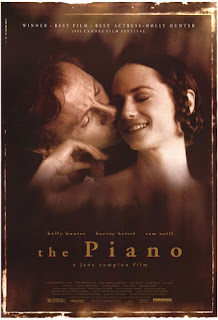July 28th: EVERYONE SAYS I LOVE YOU (Woody Allen, 1996)
Woody Allen's career was on a good run in the mid-90s, coming off two successful, Oscar-winning releases with Bullets Over Broadway and Mighty Aphrodite. Having not shot outside of New York City in over 20 years, he surprised his fans with the announcement that his next production would be partially filmed in Italy and France, though his recent collaborations with foreign investors may have been an early clue.
While Allen had always worked with exceptional talent in the past, his new endeavor is notable for highlighting how much industry clout he had amassed, and how many of Hollywood's stars wanted to work with him (and only be paid union minimum scale). The cast includes Julia Roberts, Drew Barrymore, Edward Norton, Tim Roth, Goldie Hawn, Natalie Portman, Alan Alda, Lukas Haas, Gaby Hoffman, and Natasha Lyonne (who also narrates).
To throw another curveball into the mix, Allen decided later in pre-production to turn the film into a musical, which many of the actors weren't aware of before signing on. The director wished to blend his love for the classic musicals of his youth along with the "champagne comedies" depiction the exploits of high society. Most of the songs selected are from films of the 1930s and 40s.
The members of the main cast were all asked to sing and dance, despite many not having any formal training, as Allen was looking for more natural performances. Only Barrymore, who claimed to be tone deaf, had her voice dubbed. Allen shot most of the musical numbers in wide, long shots so as not to camouflage the movements of his actors, and in tribute to the way experts like Astaire and Kelly were often captured.
The film was shot on location in New York, Paris, and Venice by veteran Italian cinematographer Carlo Di Palma, who had worked on films for Michelangelo Antonioni and Bernardo Bertolucci, as well as several other Allen pictures going back to Hannah And Her Sisters. Other returning collaborators include production designer Santo Loquasto and editor Susan Morse.
Allen had not taken the songs into account when originally writing the script, and was forced to cut scenes to what he felt was an acceptable length, losing material with Tracy Ullman and Liv Tyler in the process. This is also one of the few Allen films with obvious special effects, here used to animate singing and dancing ghosts, as well as wire work for Allen and Hawn's climatic duet on the bank of the Seine River.
Released in December, the film received mostly positive reviews (including raves from Roger Ebert and New York Times critic Janet Maslin), and was nominated for Best Picture (Musical/Comedy) at the Golden Globes. Norton won various Supporting Actor awards from critics groups, the Allen film cited alongside Primal Fear and The People vs. Larry Flynt, all released the same year.
Running time is approx. 100 minutes.











Comments
Post a Comment